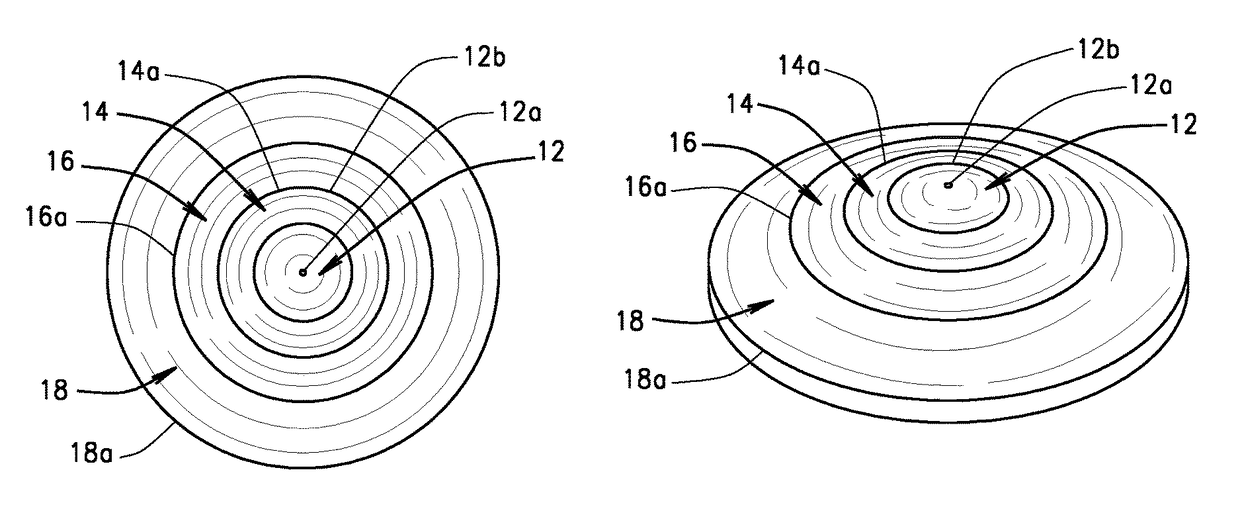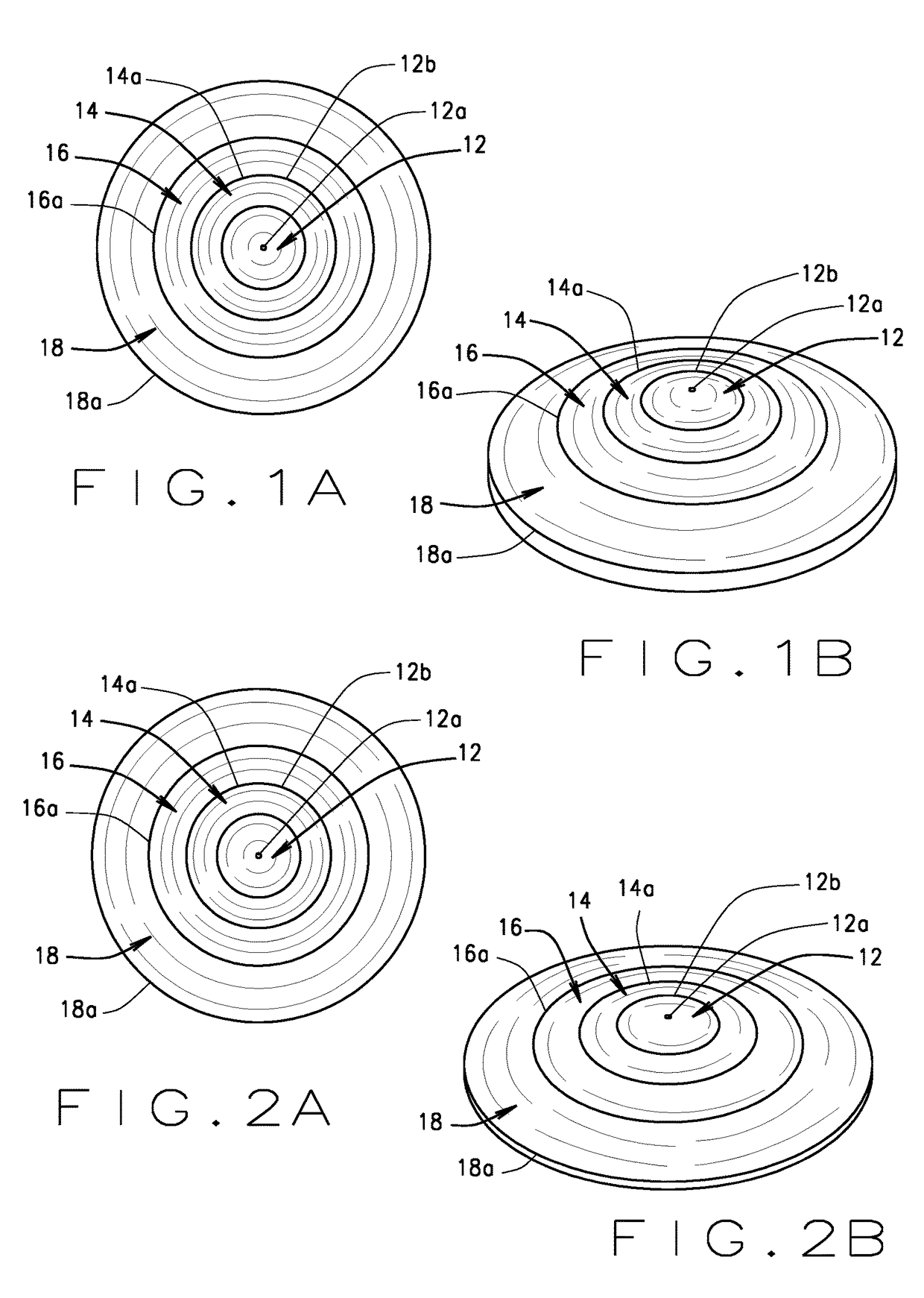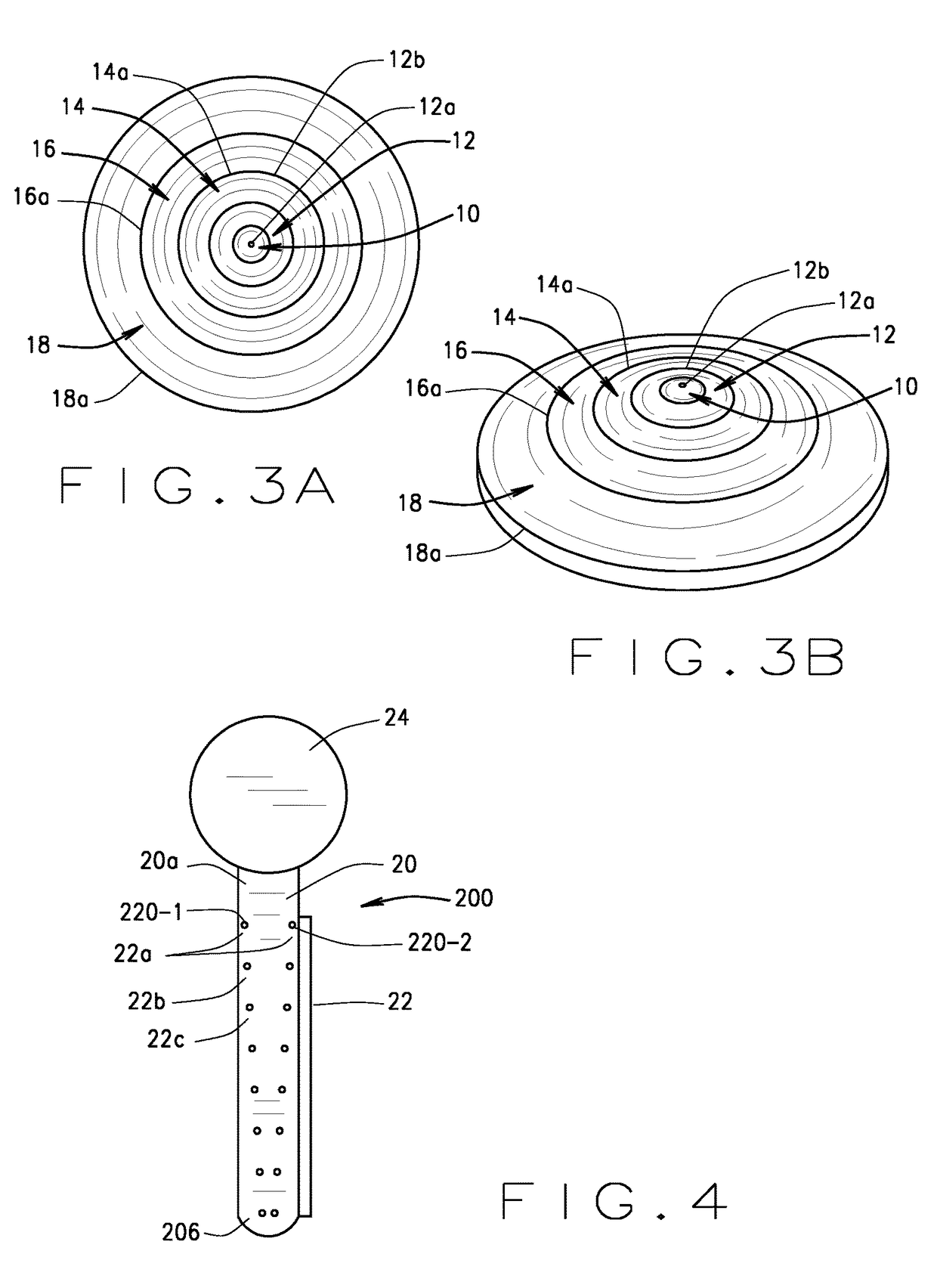Bifocal contact lenses providing reduced glare and blurriness in dim lighting
a technology of bifocal contact lenses and dim lighting, applied in medical science, diagnostics, instruments, etc., can solve the problems of poor vision quality, affecting the effect of halo effect, and distant objects that could become blurred during dim or dark illumination, so as to reduce glare and blurriness. , the effect of reducing the halo
- Summary
- Abstract
- Description
- Claims
- Application Information
AI Technical Summary
Benefits of technology
Problems solved by technology
Method used
Image
Examples
Embodiment Construction
[0027]The foregoing summary, as well as the following detailed description of certain embodiments will be better understood when read in conjunction with the appended drawings. As used herein, an element or step recited in the singular and preceded with the word “a” or “an” should be understood as not excluding the plural of said elements or steps, unless such exclusion is explicitly stated. Furthermore, references to “one embodiment” or “an embodiment” are not intended to be interpreted as excluding the existence of additional embodiments that also incorporate the recited features. Moreover, unless explicitly stated to the contrary, embodiments “comprising” or “having” an element or a plurality of elements having a particular property may include additional such elements not including or having that property.
[0028]Various embodiments as described and shown herein provide contact lenses which help ameliorate the concern noted above wherein standard bifocal contact lenses produce inc...
PUM
 Login to View More
Login to View More Abstract
Description
Claims
Application Information
 Login to View More
Login to View More - R&D
- Intellectual Property
- Life Sciences
- Materials
- Tech Scout
- Unparalleled Data Quality
- Higher Quality Content
- 60% Fewer Hallucinations
Browse by: Latest US Patents, China's latest patents, Technical Efficacy Thesaurus, Application Domain, Technology Topic, Popular Technical Reports.
© 2025 PatSnap. All rights reserved.Legal|Privacy policy|Modern Slavery Act Transparency Statement|Sitemap|About US| Contact US: help@patsnap.com



